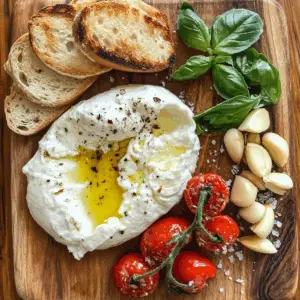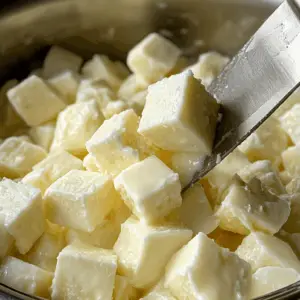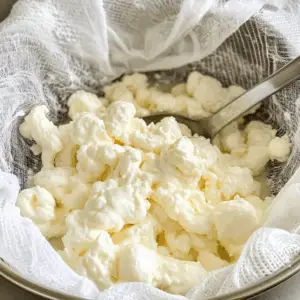
Burrata Cheese
Equipment
- Large stainless steel pot (avoid aluminum—it reacts with acid)
- Cooking thermometer (a must for precision)
- Slotted spoon or skimmer
- Long knife for curd cutting
- Cheesecloth or muslin
- Colander
- Bowls for shaping and mixing
- Microwave-safe bowl (for quick curd heating) or hot water bath
- Optional: gloves for hand-stretching the curd if it gets hot
Ingredients
- 1 gallon whole milk preferably not ultra-pasteurized
- 1/4 teaspoon liquid rennet or 1/4 rennet tablet, dissolved in 1 tablespoon cool water
- 1 1/2 teaspoons citric acid dissolved in 1/4 cup cool water
- 1/2 teaspoon kosher salt
- 1 cup heavy cream the richer, the better
- Optional: add-ins for flavor like roasted garlic or herbs if you're going for a garlic cheese twist
Instructions
Warm the Milk
- Pour the milk into your pot and gently heat it to 90°F. Stir in the dissolved citric acid.
Add Rennet and Rest
- Stir in the rennet, then stop stirring and let it sit undisturbed for 5–10 minutes. You should see the curd start to set.
Cut and Cook the Curd
- Slice the curd into 1-inch cubes and slowly heat it to 105°F, stirring gently to keep it from clumping.

Drain and Stretch
- Using a slotted spoon, transfer curds to a cheesecloth-lined colander. Drain for about 5–10 minutes. Save the whey—it’s great in bread dough or cheese bread recipes!

Make the Mozzarella Shell
- Microwave the curds for 30 seconds (or dip them in hot whey) to soften. Knead and stretch them until smooth and elastic. This is your mozzarella “shell.”
Prepare the Creamy Filling
- Mix torn bits of leftover curd with heavy cream and a pinch of salt. This is the “stracciatella” filling that gives burrata its signature creamy cheese sauce interior.
Assemble the Burrata
- Flatten a mozzarella ball into a disk, place a spoonful of the cream mixture in the center, and carefully wrap the edges up and around to seal.
Chill and Serve
- Place your finished burrata in a bowl of ice water to firm it up. It’s best eaten fresh but can be stored in brine in the fridge for a day or two.